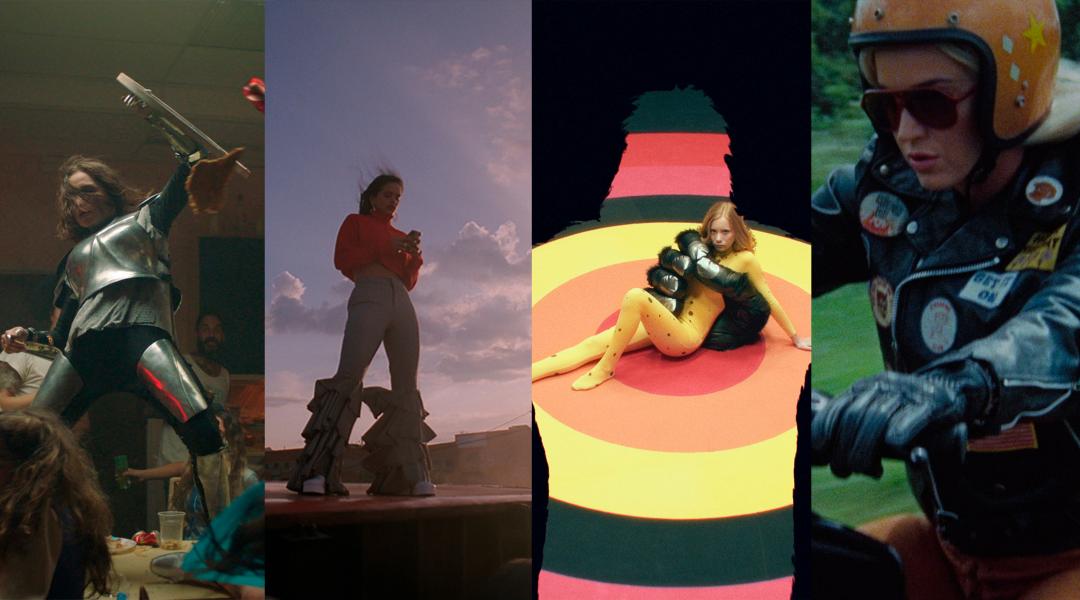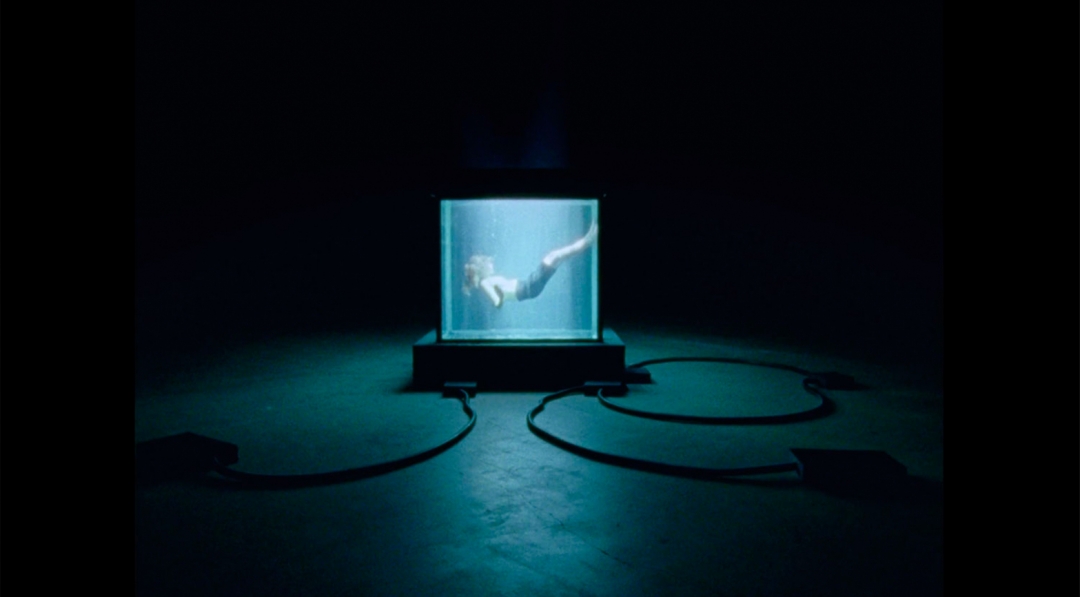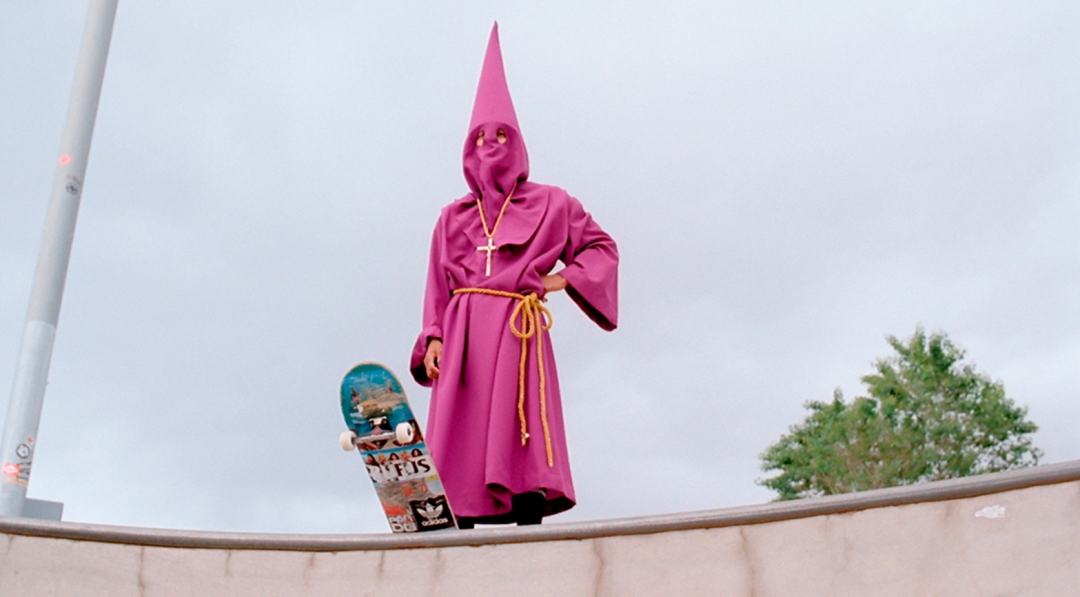CANADA
The Barcelona-based production company behind music videos for Katy Perry and Rosalia

Despite what its name and track record may suggest, the CANADA production company was founded in Barcelona more than a decade ago, leaving a signature mark on the international audio-visual scene.
CANADA was born in the late 2000s, when the economic crisis was spreading globally. Twelve years later, that project has become an established company enjoying worldwide presence and prestige, a well-deserved poetic justice. CANADA opted for creativity and risk just as the internet was beginning to establish new ways of consuming images. Today, their signature can be found in music videos for Beck, She & Him, Mura Masa, Tame Impala, Foals, Phoenix, and Katy Perry, among others. They are also responsible for TV commercials for many a multinational brand. “We try to see the interest behind working on a particular project, to detect whether it would allow us to leave some kind of mark," argues executive producer Óscar Romagosa (Barcelona, 1975) when defining the company’s creative philosophy.
Óscar joined the company in 2010, the year he partnered with production manager Alba Barneda and directors Lope Serrano and Nicolás Méndez, the architects of the visual trademark that has revolutionized the sector. “If you think about money first,” Romagosa continues, “you will probably stop doing interesting things. But if you do it the other way around and prioritize stimulating projects, money ends up coming to you.”

A photo still from a music video for a single by Foals, for CANADA
“Bombay” by El Guincho, the first hit
Not without certain sense of humour, Romagosa considers himself, “the mother” of CANADA. “In a company like this, filmmaking and direction could be defined as the fatherly part and production as the motherly part. It’s not as visible, but in order to strengthen the creative part, a production team is necessary.” Romagosa arrived in CANADA when they were giving the last touches to the music video for "Bombay", by El Guincho. The video went viral and, as a result, it immediately attracted worldwide attention to the company, receiving their first international project. The band Scissor Sisters commissioned Mendez to make a video in the style of “Bombay”. "Nicolás agreed but made it clear he wasn’t going to repeat what he had already done.” The band accepted CANADA’s proposal for “Invisible Light”, a video full of film references —from Buñuel to Kenneth Anger— boasting a signature language that once again transformed a music video into an artistic work. “If the director wants risk, we go for the risk, no matter if the project is for a more mainstream brand and it ends up being more laborious. But we always prioritize the expression of creativity. We apply that intensity to everything we do.”
“If you think about money first, you will probably stop doing interesting things. But if you do it the other way around and prioritize stimulating projects, money ends up coming to you”
That intensity brought them more success thanks to music videos for Phoenix ("Trying To Be Cool"), Tame Impala ("The Less I Know The Better", —"The video was kind of crazy, but Kevin Parker didn’t change anything at all, he accepted it the way we gave it to them”—) and Beck, whose video for “Up All Night” received a Grammy nomination in 2018 for Best Music Video. That strength is also reflected in the magnetism that turned Rosalía’s videos for “Pienso en tu mirá” and “Malamente” into two spectacular pieces. “We were suddenly given the chance to work with her. Nicolás and CANADA made a great effort to create something very big, a game changer. It was a dialogue between Rosalia and CANADA. She is very talented and was also looking for something ambitious, so she supported Nicolás' ideas and adapted some of hers to make the whole thing work. For a tennis match to be spectacular, both players have to be good.”

A photo still from “Malamente” by Rosalía, directed by Nicolás Méndez and made by CANADA
Choreographies, trucks and truck drivers, flamenco-style still lifes, motorcycles and an artist in a state of grace committed to a team that was in turn devoted to her made of both videos a turning point in Rosalía's career that also meant a great leap for CANADA. “One of the good things about globalization is that if you have an exportable talent, you can show it to the world. In earlier times, Rosalia wouldn’t have performed at Coachella as right away as she did nor would she be almost as successful in the United States as she is in Spain. You have to accept challenges. We feel the need to always be looking for something new. I guess working internationally helps you keep the tension because the world grows bigger and it’s not that clear that you’ve already seen everything.”
“One of the good things of globalization is that if you have an exportable talent, you can show it to the world”
From Andorra Down South
Apart from their track record in the Anglo-Saxon market, CANADA continues working with Spanish talent. Over the years, they have made music videos for Spanish bands Hidrogenesse, Los Punsetes, Fangoria, Hinds, Christina Rosenvinge and Mourn, and now they are working with artists such as C. Tangana and Bad Gyal. It might seem financially impossible for a local artist to work with the same company that films in Hawaii with Katy Perry, but this isn’t the case. “We provide solutions tailored to each proposal. If someone comes up with a cool idea, we don't care about the size of the project. We can adapt by working with new talents in the audio-visual sector. It’s always stimulating to work with someone like Pucho [C. Tangana], who is very active and committed to all things audio-visual.” On the other hand, Borja Rosal and Alba Blasi run CANADA's record label. Rather than being an old-fashioned record label, the aim is to work as a kind of partner to help artists grow. Bad Gyal and El Guincho are two of the artists on the label’s roster.
And then there are the commercials for big brands with the CANADA signature, from cars and fashion firms to department stores and drinks, although the level of risk here is lower. “We like to work with clients and collaborators who are not governed by fear. If you panic, then doing something interesting will be difficult. But if you decide to take risks, you must do it with flexibility and intelligence. Let's not forget commercials reach a massive audience and any mistake can be magnified enormously. Now audiences react very quickly, and if they see something that seems wrong, they’ll say it immediately,” he explains. "You have to think about the brand and offer them ideas that won’t give them any problems.”


